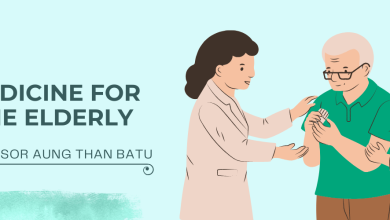Current Management of Helicobacter Pylori Infection

Introduction
- Helicobacter pylori – Gram negative bacteria which was identified in 1982, by Australian Gastroenterologist Marchell and pathologist Robin Warren. In 2005, they were awarded the Nobel Prize in Physiology for their pioneering work on Helicobacer Pylori. In a systematic review and meta-analysis to assess the prevalence of H pylori infection worldwide, more than half the world’s population is infected with large amounts of variation among regions.1
The prevalence varices by geographical area, age, race, ethnicity and socioeconomic status. Inadequate sanitation practices, low social class, high density living conditions related to higher prevalence in developing countries and transmission among family members (number of siblings and having an infected parent, especially mother).
H.pylori typically reside in the antrum of the stomach, whereas the greatest acid secretion, ulceration and tumor formation occur in the body, or corpus, of the stomach.
H.pylori are slowing growing organisms that can cause peptic ulcers and gastritis that can lead to gastric cancer and gastric MALT(mucosa-associated lymphoid tissue) lymphoma. WHO classified H Pylori as Class1 Carcinogen on 1994.
- In Myanmar, the prevalence of pylori infection among asymptomatic Myanmar monks was 65.4% in 2015.2 According to 2020 thesis research (Khon Nyi Nyi) 3, the prevalence of H.Pylori in dyspeptic patients was 59.6%. Nearly half of populations were infected with H.Pylori infection. Faecal–oral and oral–oral routes are considered the most likely routes of transmission. Contaminated water may be a source of infection in developing countries. H. pylori can be cultivated from the vomitus, stool and saliva of individuals with infection, indicating the potential transmissibility via these routes. Person-to-person transmission within families, especially from mothers and siblings with the infection, is common in developing countries. The annual reinfection or recrudescence rate after successful eradication is low (<2%) in adults in developed countries but is higher (5-10%) in adults in developing countries and in children.
- In recent H Pylori guideline (Masstrict VI) 4 Test-and-treat is a well-defined strategy and refers to non- invasive testing for pylori in patients with dyspeptic symptoms and to eradication of the infection whenever detected. Scope and Treat is recommended for patients whose Symptoms onset after 50 years, presence of alarm features and failure of test and treat.
Indication of H.Pylori treatment5
- Past or present duodenal and/or gastric ulcer, with or without complications
- Gastric mucosa-associated lymphoid tissue (MALT) lymphoma
- Gastric mucosa atrophy and or Intestinal Metaplasia
- Following resection of early gastric cancer
- Patients who have first-degree relatives with gastric cancer Patients’ wishes (after full consultation with their physician)
- Functional dyspepsia
- To reduce the risk of peptic ulcer and upper gastrointestinal bleeding in nonsteroidal anti -inflammatory drug-naive users
- Before starting long-term aspirin therapy for patients at high risk for ulcers and ulcer-related complications
- Gastroesophageal reflux disease patients requiring long-term proton pump inhibitor
- As a strategy for gastric cancer prevention in communities with high incidence
- Unexplained iron-deficiency anemia, or idiopathic thrombocytopenic purpura, low grade gastric MALT lymphoma.
Diagnosis
In young dyspeptic patients (age below 50) with no specific risk and no alarm symptoms, non-invasive testing for H. pylori infection is recommended. Urea Breath Test (UBT) is an important tool for H. pylori diagnosis before and after eradication therapy. The Specificity- and sensitivity of UBT is 96% and 88-96% respectively. But it is needed to stop antibiotics 4 weeks and PPI 2 weeks before test. Monoclonal stool antigen test (SAT) is also an appropriate non invasive test before and after H. Pylori treatment.Laboratory-based EIA (Enzyme Immuno Assay) stool tests performed better than rapid tests. Monoclonal antibody-based ELISA test is sensitivity 94% and specificity 96%.4 Enzyme-linked immunosorbent assay (ELISA) technology can detect IgG antibodies. Serology does not indicate an active infection. Serology is not suitable for post eradication confirmation.

Fig 1. Comparison of invasive diagnostic methods for H.Pylori infection
Treatment
It is a challenging regarding treatment of H.Pylori infection. H.Pylori eradication rate is declining while prevalence of antibiotic resistance has been rising globally. Resistance to clarithromycin by H.Pylori has increased to >15% in East Asia. First line eradication rate below 80% are strongly associated with clarithromycin resistance H pylori strain emergence. In 2017, Maastrict V H.Pylori guideline recommended that PPI-clarithromycin-containing triple therapy without prior susceptibility testing should be abandoned when the clarithromycin resistance rate in the region is more than 15%.6
H. pylori resistance rates to metronidazole (MDZ) and fluoroquinolone are also high in East Asia. (WGO) In Myanmar, clarithromycin resistance is 63.5% in 2015 (Mya Mya Aye) 7 and 6.1 % in 2020 ( Khun Nyi Nyi). Depends on sample of research and different diagnostic methods, there was a wide variation of resistance rate. Therefore, we need more research for drug resistance to get updated data.
Recent Maastricht VI guideline recommend that susceptibility tests (molecular or after culture) are routinely performed, even before prescribing first-line treatment to limit the increase of global antibiotic resistance by avoiding the use of unnecessary antibiotics. If individual susceptibility testing is not available, the first-line recommended treatment in areas of high (>15%) or unknown clarithromycin resistance is bismuth quadruple therapy (bQT) (proton pump inhibitor (PPI), bismuth, tetracycline and metronidazole). If bismuth is not available, non- bismuth concomitant quadruple therapy may be considered. The treatment duration of Bimuth or non bismuth should be at least 14 days. Currently available combined drugs kits in Myanmar should not be used due to inappropriate drug combinations and dosage which is one factor resulting drug resistance.


Along with efficacious antibiotics, sufficient and continuous acid suppression is required for successful eradication. When H. pylori enters a replicative state between pH 6 and 8, the pathogen becomes highly susceptible to antibiotics, such as AMX. Recently, P-CABs, potassium-competitive acid blocker, have been found to increase the intragastric pH to 6 or more, which improves antibiotic stability and bioavailability.4 (South East asia) vonoprazan, a novel potassium-competitive acid blocker, has been used in H. pylori eradication therapy in order to increase the eradication rate. vonoprazan inhibits H+, K+-ATPase in the gastric acid secretion of parietal cells more rapid and sustained acid-inhibitory effect compared to PPIs, not dependent on CYP2C19 genotype. Conventional PPIs require 3-5 d to achieve maximal and steady-state gastric acid inhibition, whereas P-CABs increase the intragastric pH to nearly 7 within four hours. In Myanmar, vonoprazan is not currently available, but will available soon.
H. pylori vaccine has been developed for a decade. The largest phase 3 trial conducted in China (Chinese children, N = 4464) concluded that an efficacy of oral recombinant H. pylori vaccine was 71.8% in the first year and decreased to 55% in the second year. Protection against H. pylori infection was maintained for 3 years after vaccination.8
In conclusion, not only H. Pylori prevalence but also drug resistance in eradication therapy is increasing in developing countries. It is very crucial to choose the first line treatment regime to eradicate that notorious infection. Now, all gastroenterologists here in Myanmar are enthusiastically implementing to develop an efficient H. Pylori Myanmar Guideline in accord with the available information and drugs.
Reference
- Gastroenterology 2017 Aug;153(2):420-429.doi: 10.1053/j.gastro.2017.04.022.Epub 2017 Apr 27.
- Than Than Aye, Nwe Ni, Thein Myint, Khin San Aye, Win Phyu Phyu Myint, Myanmar Medical Journal, March 2015 :Vol: 57:17-23
- Khun Nyi Nyi. Doctorate thesis .2020
- Malfertheiner P, et al. ‘Management of Helicobacter pylori infection: the Maastricht VI/Florence consensus report’, Gut 2022;0:1–39. doi:10.1136/gutjnl-2022-327745
- J Clin Gastroenterol. Volumne 57, Number 2, February 2023
- Malfertheiner P, Megraud F, O Morian CA, et al., (2017) Management of Helicobacter pylori infection the Maastricht V Consensus Report, Gut ;66:6-30.
- Mya Mya Aye. Doctorate Thesis.2015
- JGH Open: An open access journal of gastroenterology and hepatology 7 (2023) 3–15
Author Information
Thida Soe1, Thein Myint2
1. Associate Professor, Department of Gastroenterology, Yangon General Hospital
2. Professor, Patron of Myanmar GI& Liver Society, Former Head of Department of Gastroenterology, Yangon General Hospital / University of Medicine (1) Yangon.





